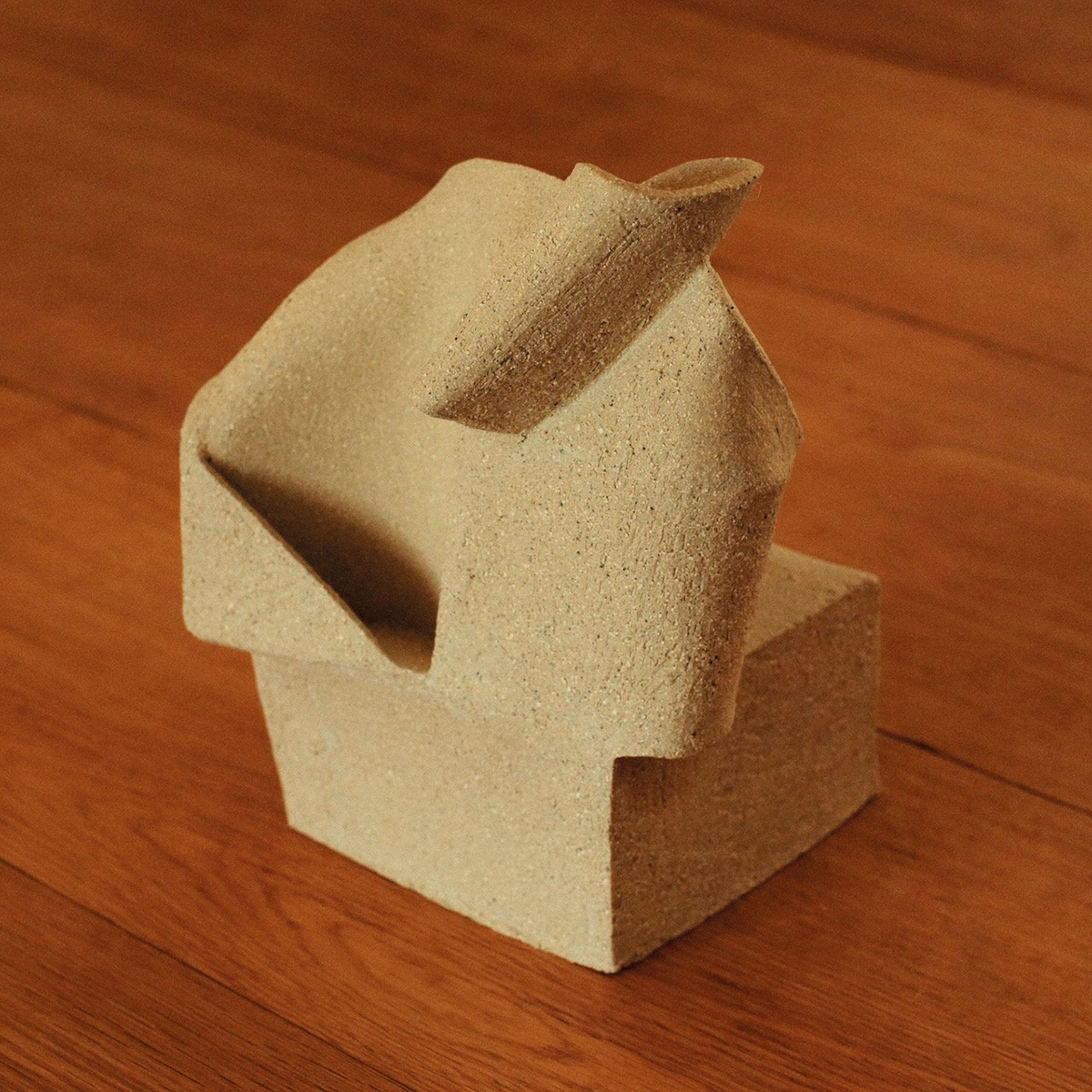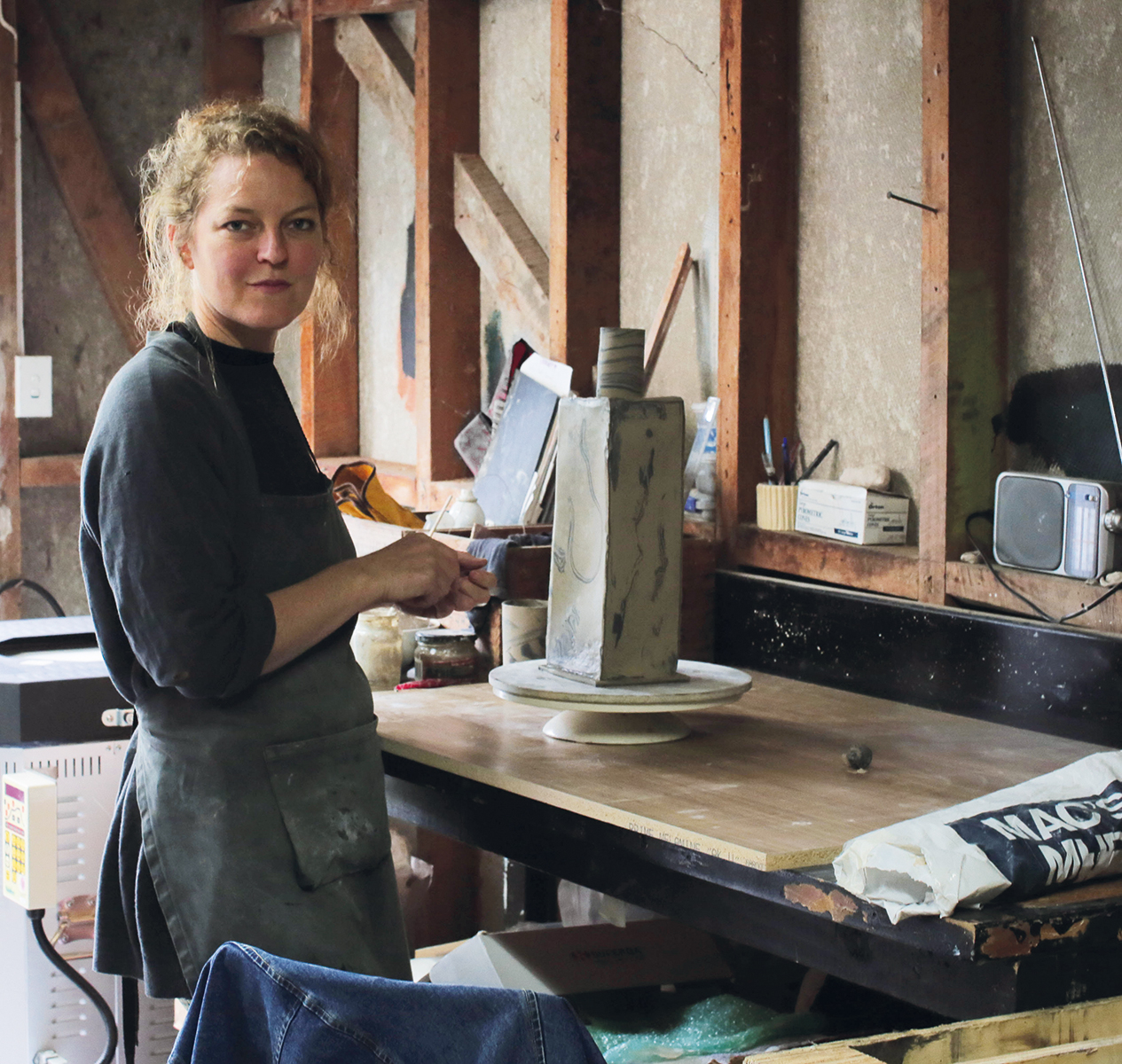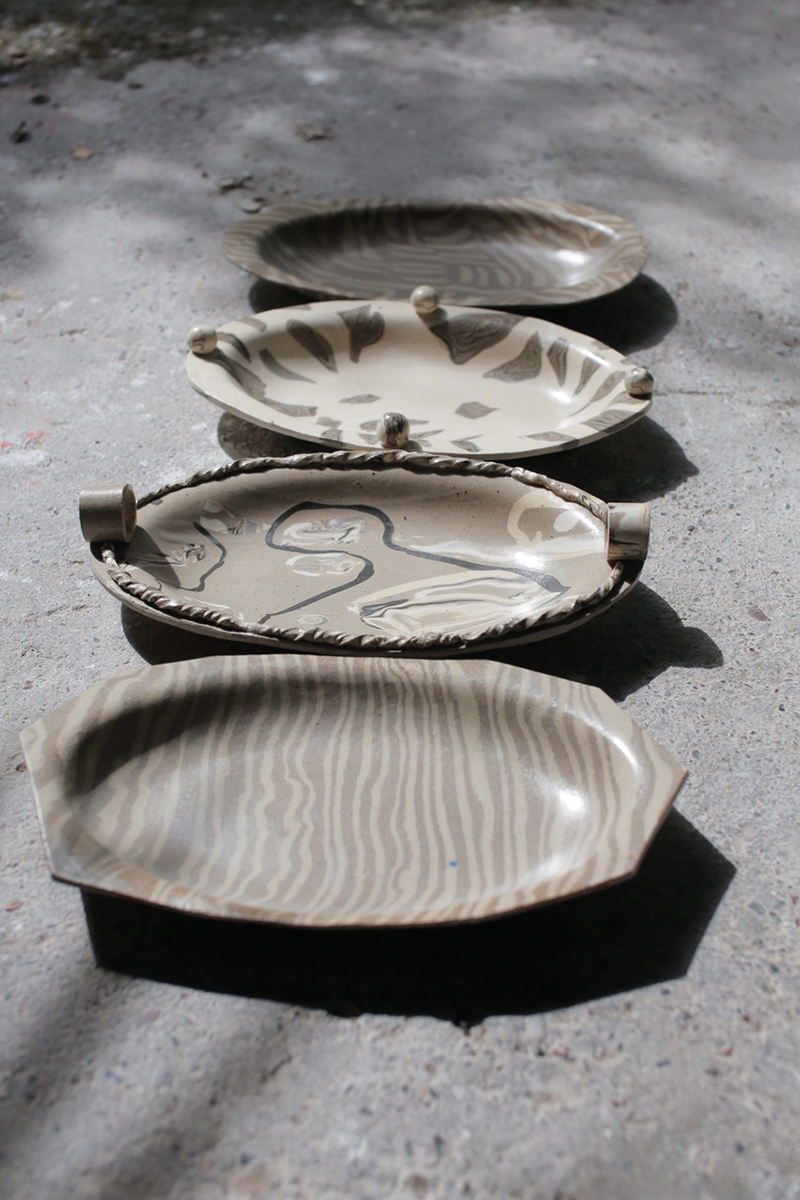The studio of ceramicist Lucy McMillan sits in a “dear friend’s” garden shed, surrounded by a small orchard in a beautifully kept garden as natural light cascades through sizeable doors.
“It’s small and chaotic and filled to the brim with stuff and everything I need,” says Lucy. “I listen to the radio all day long in here, and I couldn’t be happier.”
The Elam School of Fine Arts alumna tells Verve that she came to pottery through her painting practice. Her work, she adds, has always “played within sculptural terms”, and moving on to clay seemed like a natural extension. “I like how both materials have a lot of stretch and give,” continues Lucy. “I’ve been working through painterly ideas in pottery, and in particular, I like the edges, the corners, and the collapsing forms I’m able to make with clay. Clay has a beautiful elegance, the way it changes state from humble mud to a solid object in a firing.”
Lucy’s work is influenced by agateware – revered for its marbling effect which is created by mixing different clays – as well as brutalism and mid-century design. She’s drawn to the history of clay, a material which forms some of humanity’s oldest creations, and wonders if one day her work, too, will be discovered among distant future ruins. “I like thinking about clay as a culture that holds a past,” says the ceramicist. “How each loose grain and mineral has filtered through time. Transforming clay dug up from the ground feels a bit like alchemy. Like magic. It connects me to history.”
Lucy was raised among the peaceful hills of Waikari Valley in Canterbury, her family “very practical and connected to the land, season and food”. As a teenager she moved north with her mother to settle in Piha. “So, from dry, tussocky southern countryside to the dark, lush, dense bush of the west coast,” she recalls. “Both places very wild in their own way. I grew up surrounded by artists in my family and people in the small, isolated communities where I lived.”

“Clay has a beautiful elegance, the way it changes state from humble mud to a solid object in a firing.”


After graduating from Elam in the late 90s, Lucy spent 10 years in Berlin (“a different kind of wild!”) where she taught art at an international school, and now lives with her family in a co-housing community of 20 households in Grey Lynn, her working hours “chiming with my children’s school day”.
I ask Lucy if she sketches her designs prior to beginning the physical creative process but she says she rarely even knows what she’s making before she starts, opting instead to “go in blind”.
“I find I am able to make my best work when I get lost in it, and look back at decisions I’ve made and not know how I got there. It’s often the patterns that present themselves that steer the form of the object I make. Or a memory of something I’ve seen. I’m often trying to emulate an experience felt in an architectural space.”
Sometimes, more meaningful pieces are brought home to be worked on at her kitchen table, “which I love – I’d work there every day if I could”.
When asked if there are any pieces that have been too special to sell, Lucy admits that there’s an ever-growing collection of them in her home thanks to her partner “peeling away his favourites from my studio over time”.
“I also keep a lot of my seconds as reminders of clay combinations or forms that I want to revisit,” she adds. “I have a fondness for the ones that didn’t make it the whole way.”






